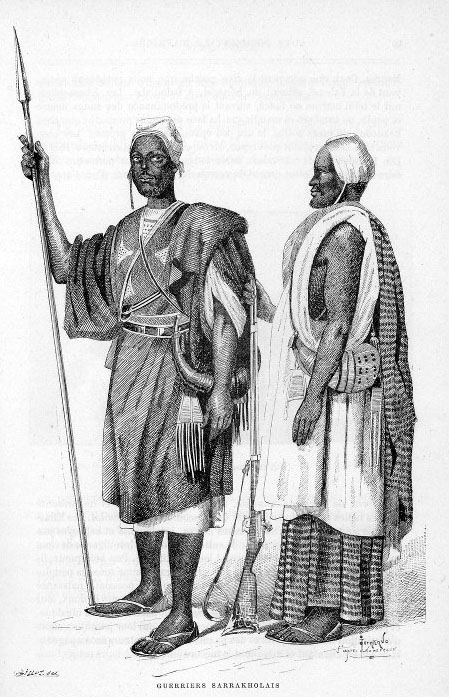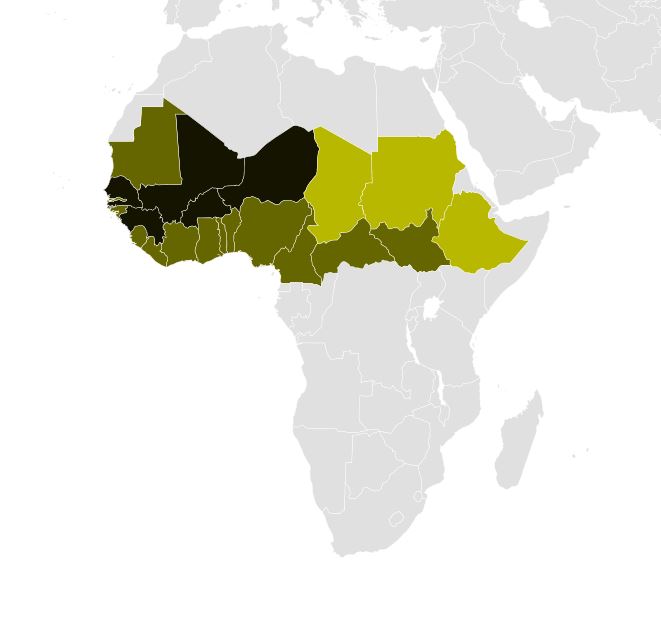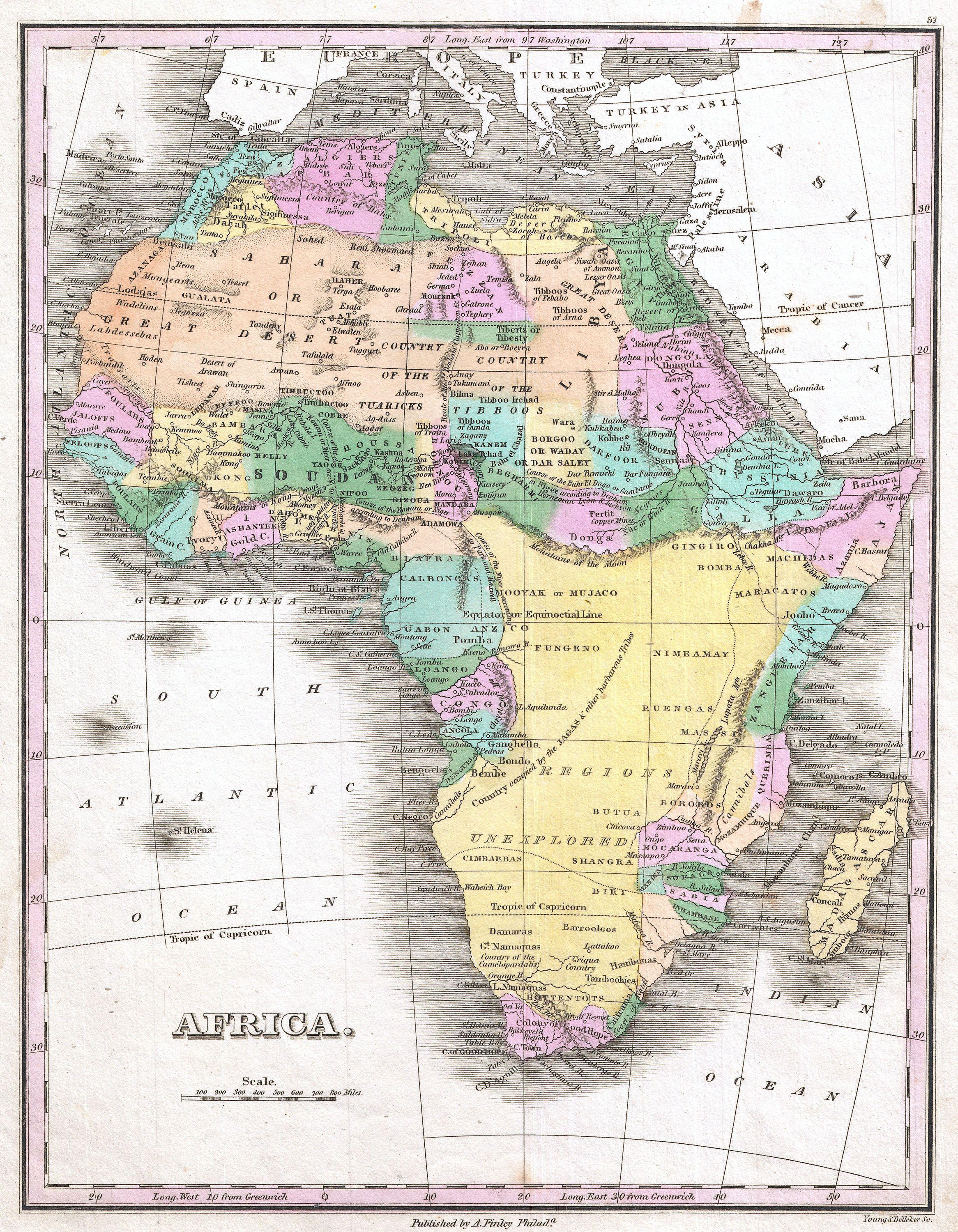|
Ségou Empire
The Ségou Empire (also Bambara or Bamana Empire , ) was one of the largest states of West Africa in the 18th century. Along with Kaarta it was one of the most important successors of the Songhai Empire. Based on an earlier kingdom established in 1640, it grew into a powerful empire in the early 18th century under Bitòn Coulibaly. The empire existed as a centralized state from 1712 until the 1861 invasion by the Toucouleur conqueror El Hadj Umar Tall. History Bitonsi Around 1640, Kaladian Coulibaly, also known as Fa Sine, became the leader of a small Bambara kingdom in the city of Ségou in Mali. Though he made many successful conquests of neighboring tribes and kingdoms, he failed to set up a significant administrative framework, and the new empire disintegrated following his death (). In 1712 Mamari Kulubali, also known as Biton Coulibaly, Kaladian's great-grandson, was elected the leader of a youth organization known as a ''tòn''. Mamari soon reorganized the tòn as a ... [...More Info...] [...Related Items...] OR: [Wikipedia] [Google] [Baidu] |
Kaladian Coulibaly
Kaladian Coulibaly was a West African ruler who founded one of the first large Bambara kingdoms, centered on Ségou in what is now Mali. Originally from Kong in what is now the Ivory Coast Ivory Coast, also known as Côte d'Ivoire and officially the Republic of Côte d'Ivoire, is a country on the southern coast of West Africa. Its capital city of Yamoussoukro is located in the centre of the country, while its largest List of ci ..., he was a mercenary warlord who overthrew the ruling Koita dynasty of Segou. Around 1650, Coulibaly's kingdom was one of the dominant forces in the region. Though it lacked a systematic framework and thus failed to outlast his death (c. 1680), his great-grandson Bitòn Coulibaly would found a more stable Bambara Empire fifty years later on the same spot. References *Davidson, Basil. ''Africa in History''. New York: Simon & Schuster, 1995. *Page, Willie. (ed.) ''Encyclopedia of African History and Culture''. Facts on File, 2005. External li ... [...More Info...] [...Related Items...] OR: [Wikipedia] [Google] [Baidu] |
Tomboctou
Timbuktu ( ; ; Koyra Chiini: ; ) is an ancient city in Mali, situated north of the Niger River. It is the capital of the Tombouctou Region, one of the eight administrative regions of Mali, having a population of 32,460 in the 2018 census. Archaeological evidence suggests prehistoric settlements in the region, predating the city's Islamic scholarly and trade prominence in the medieval period. Timbuktu began as a seasonal settlement and became permanent early in the 12th century. After a shift in trading routes, particularly after the visit by Mansa Musa around 1325, Timbuktu flourished, due to its strategic location, from the trade in salt, gold, and ivory. It gradually expanded as an important Islamic city on the Saharan trade route and attracted many scholars and traders before it became part of the Mali Empire early in the 14th century. In the first half of the 15th century, the Tuareg people took control for a short period, until the expanding Songhai Empire absorbed it i ... [...More Info...] [...Related Items...] OR: [Wikipedia] [Google] [Baidu] |
Bamako
Bamako is the Capital city, capital and largest city of Mali, with a 2022 population of 4,227,569. It is located on the Niger River, near the rapids that divide the upper and middle Niger valleys in the southwestern part of the country. Bamako is the nation's administrative center. The city proper is a Cercles of Mali, cercle in its own right. Bamako's Inland port, river port is located in nearby Koulikoro, along with a major regional trade and conference center. Bamako is the seventh-largest West Africa, West African urban center after Lagos, Abidjan, Kano (city), Kano, Ibadan, Dakar, and Accra. Locally manufactured goods include textiles, processed meat, and metal goods as well as mining. Commercial fishing occurs on the Niger River. In recent years, Bamako has seen significant urban development, with the construction of modern buildings, shopping malls, and infrastructure projects aimed at improving the quality of life for its residents. The city is home to many notable ins ... [...More Info...] [...Related Items...] OR: [Wikipedia] [Google] [Baidu] |
Beledougou
Beledougou (fr. Bélédougou) is an historic region of the pre-colonial Bambara Empire in today's central Mali. In the Bambara language the name literally means "County of the gravel". A dry land on the interface of the Sahel and the wetter Sudan, it was populated by a loose confederation Bambara farming communities. Its area falls in today's Koulikoro Region, primarily in Kolokani Cercle, Koulikoro Cercle, Banamba Cercle, and parts of Nara Cercle. Much of pre-colonial Beledougou remained staunchly animist after the fall of the Bambara Empire. In 1915, it was the scene of a major revolt against French forced conscription, in a rising led by Koumi Diosse Traore. See Also *Kala (province) Kala was a province of the Mali Empire and later the Songhai Empire, in modern-day Mali. Historically the term applied to the territory on both banks of the Niger river upstream of the Inner Niger Delta, north of Bendugu. By the 18th century the te ... * Bendugu (province) References *Pascal Ja ... [...More Info...] [...Related Items...] OR: [Wikipedia] [Google] [Baidu] |
Macina, Mali
Macina (also Ké Macina and Massina) is a small town and Communes of Mali, rural commune in the Macina Cercle, Cercle of Macina in the Ségou Region of southern-central Mali. The commune covers an area of 1,100 square kilometers and contains the main town and 20 villages. In the 2009 census the commune had a population of 36,170. The town of Macina lies on the north (left) bank of the Niger River. The farmland around the town forms part of the irrigated area of the Office du Niger and is used for growing rice. Water is diverted from the Niger River upstream of the Markala dam and fed into a system of canals. Ke-Macina was founded in 1921 and named after the Bozo people, Bozo village of Ke across the river, and the Inner Niger Delta region, often called Macina. References External links *. Communes of Ségou Region Communities on the Niger River {{Ségou-geo-stub ... [...More Info...] [...Related Items...] OR: [Wikipedia] [Google] [Baidu] |
Mossi Kingdoms
The Mossi Kingdoms, were a group of kingdoms in modern-day Burkina Faso that dominated the region of the Volta River, upper Volta river for hundreds of years. The largest Mossi kingdom was that of Ouagadougou. The king of Ouagadougou, known as the Mogho Naaba, or King of All the World, served as the Emperor of all the Mossi. The first kingdom was founded when warriors from the ancient Great Naa Gbewaa kingdom in present-day Ghana region and Mandé warriors moved into the area and intermarried with local people. The different kingdom's consolidation of political and military power began in the 13th century, leading to conflicts between the Mossi kingdoms and other nearby powerful states. In 1896, the French took over the kingdoms and created the French Upper Volta colony, which for many decades largely governed using the Mossi administrative structure. Some Mossi Kingdoms still exist today as Non-sovereign monarchy, constituent monarchies within Burkina Faso. Most notably, Naba B ... [...More Info...] [...Related Items...] OR: [Wikipedia] [Google] [Baidu] |
Soninke People
The Soninke (Sarakolleh) people are a West African Mande languages, Mande-speaking ethnic group found in Mali, southern Mauritania, eastern Senegal, The Gambia, and Guinea (especially Fouta Djallon). They speak the Soninke language, also called the Serakhulle or Azer language, which is one of the Mande languages. Soninke people were the founders of the ancient Ghana Empire, empire of Ghana or Wagadou c. 200–1240 CE, Subgroups of Soninke include the Jakhanke, Maraka and Soninke Wangara, Wangara. When the Ghana empire was destroyed, the resulting diaspora brought Soninkes to Mali, Mauritania, Senegal, Gambia, Burkina Faso, Côte d'Ivoire, Guinée-Conakry, modern-day Republic of Ghana, Kano in Nigeria, and Guinea-Bissau where some of this trading diaspora was called Wangara, leading to the saying “when Americans landed on the moon, a Soninke was already there” in Senegal, with other versions across West Africa. Predominantly Muslims, the Soninke were one of the early ethnic gr ... [...More Info...] [...Related Items...] OR: [Wikipedia] [Google] [Baidu] |
Fula People
The Fula, Fulani, or Fulɓe people are an ethnic group in Sahara, Sahel and West Africa, widely dispersed across the region. Inhabiting many countries, they live mainly in West Africa and northern parts of Central Africa, South Sudan, Darfur, and regions near the Red Sea coast in Sudan. The approximate number of Fula people is unknown, due to clashing definitions regarding Fula ethnicity. Various estimates put the figure between 25 and 40 million people worldwide. A significant proportion of the Fula – a third, or an estimated 7 to 10 million – are pastoralism, pastoralists, and their ethnic group has the largest nomadic pastoral community in the world., Quote: The Fulani form the largest pastoral nomadic group in the world. The Bororo'en are noted for the size of their cattle herds. In addition to fully nomadic groups, however, there are also semisedentary Fulani – Fulbe Laddi – who also farm, although they argue that they do so out of necessity, not choice. The major ... [...More Info...] [...Related Items...] OR: [Wikipedia] [Google] [Baidu] |
Kong Empire
The Kong Empire (1710–1898), also known as the Wattara Empire or Ouattara Empire for its founder Seku Watara, was a pre-colonial state centered in what is now northeastern Ivory Coast that also encompassed much of present-day Burkina Faso and parts of Mali and Ghana. It established a largely decentralized commercial empire based upon linkages between merchant houses, protecting trade routes throughout the region. Kong rose to prominence in the 1700s as a key commercial center and center of Islamic studies. In 1898, Samori Ture attacked the city and burnt it down. Although the city was rebuilt, the Kong empire did not survive and the French took control over the area. History Background The area around Kong was settled primarily by Gur languages, Gur-speaking agriculturalists, particularly the Senufo people and Tyefo language, Tyefo people. Starting in the 14th century Mandé peoples, Mandé merchants, known as the Dyula people, Dyula, migrated from the Mali Empire into t ... [...More Info...] [...Related Items...] OR: [Wikipedia] [Google] [Baidu] |
Shell Money
Shell money is a medium of exchange similar to coin money and other forms of commodity money, and was once commonly used in many parts of the world. Shell money usually consisted of whole or partial sea shells, often worked into beads or otherwise shaped. The use of shells in trade began as direct commodity exchange, the shells having use-value as body ornamentation. The distinction between beads as commodities and beads as money has been the subject of debate among economic anthropologists. Shell money has appeared in the Americas, Asia, Africa and Australia. The shell most widely used worldwide as currency was the shell of '' Cypraea moneta'', the money cowry. This species is most abundant in the Indian Ocean, and was collected in the Maldive Islands, in Sri Lanka, along the Malabar coast, in Borneo and on other East Indian islands, and in various parts of the African coast from Ras Hafun to Mozambique. Cowry shell money was an important part of the trade networks of Afric ... [...More Info...] [...Related Items...] OR: [Wikipedia] [Google] [Baidu] |






